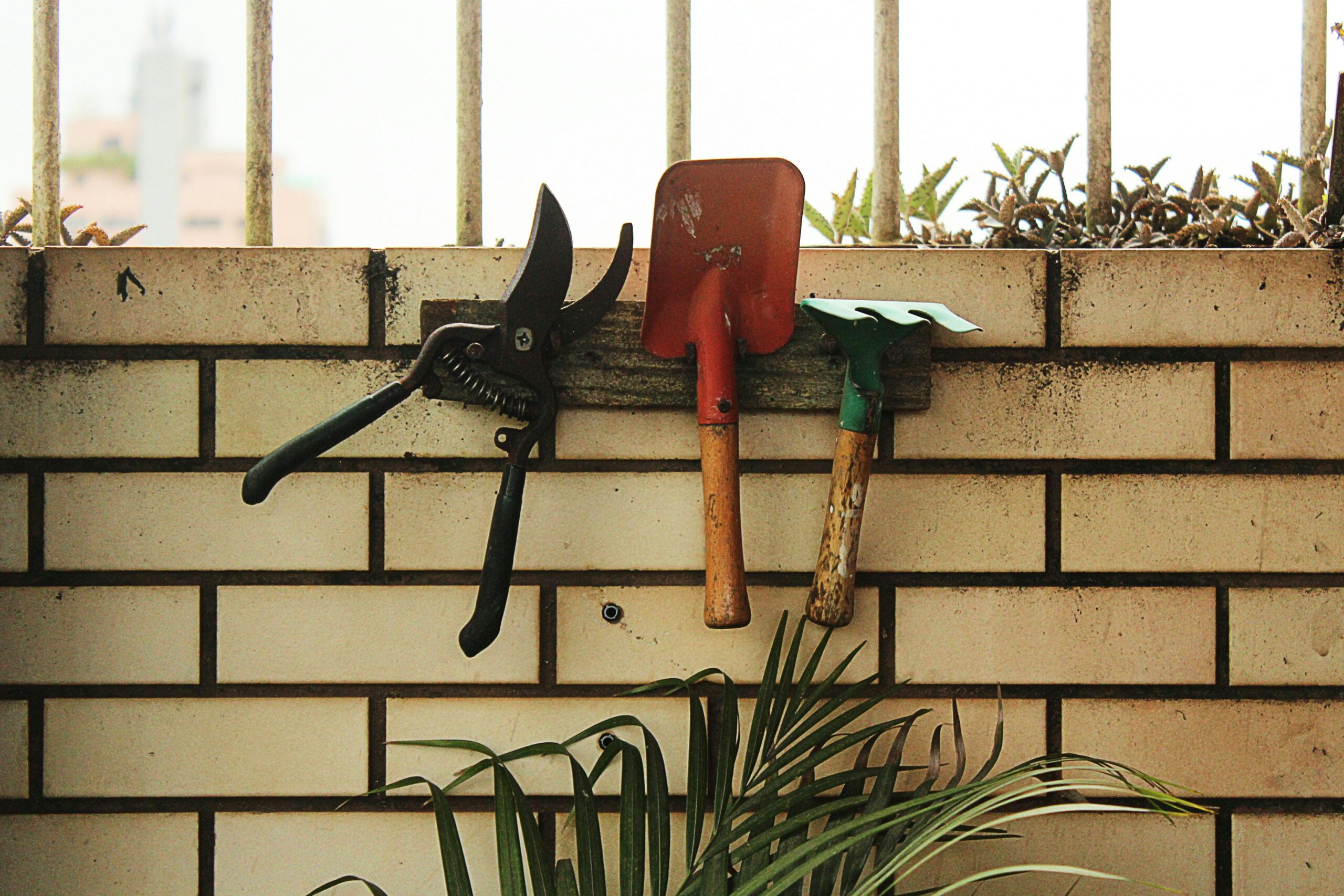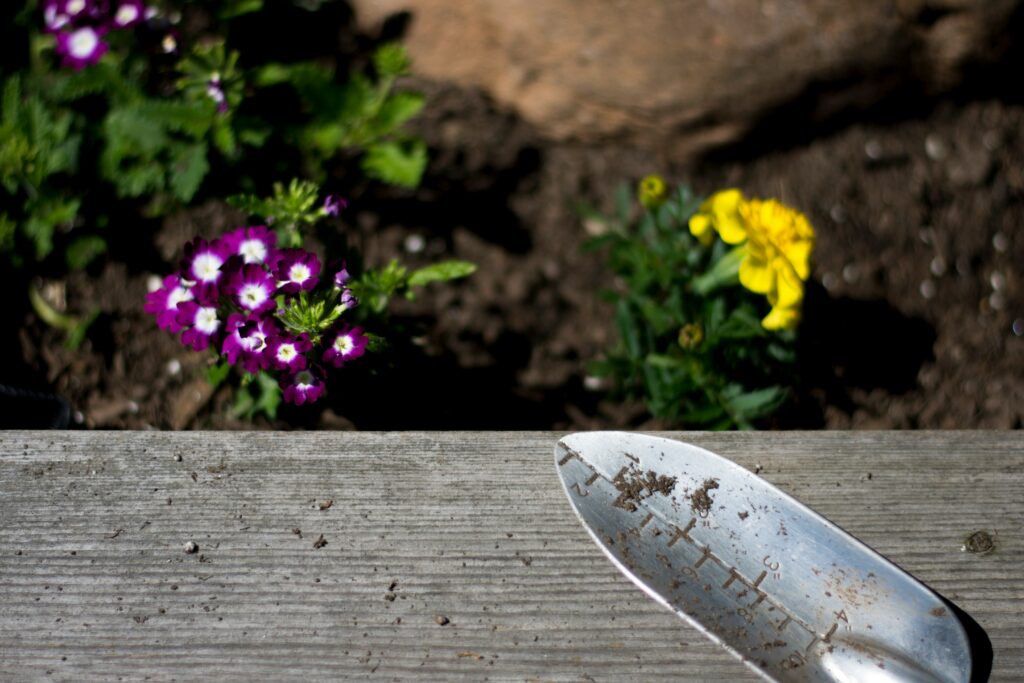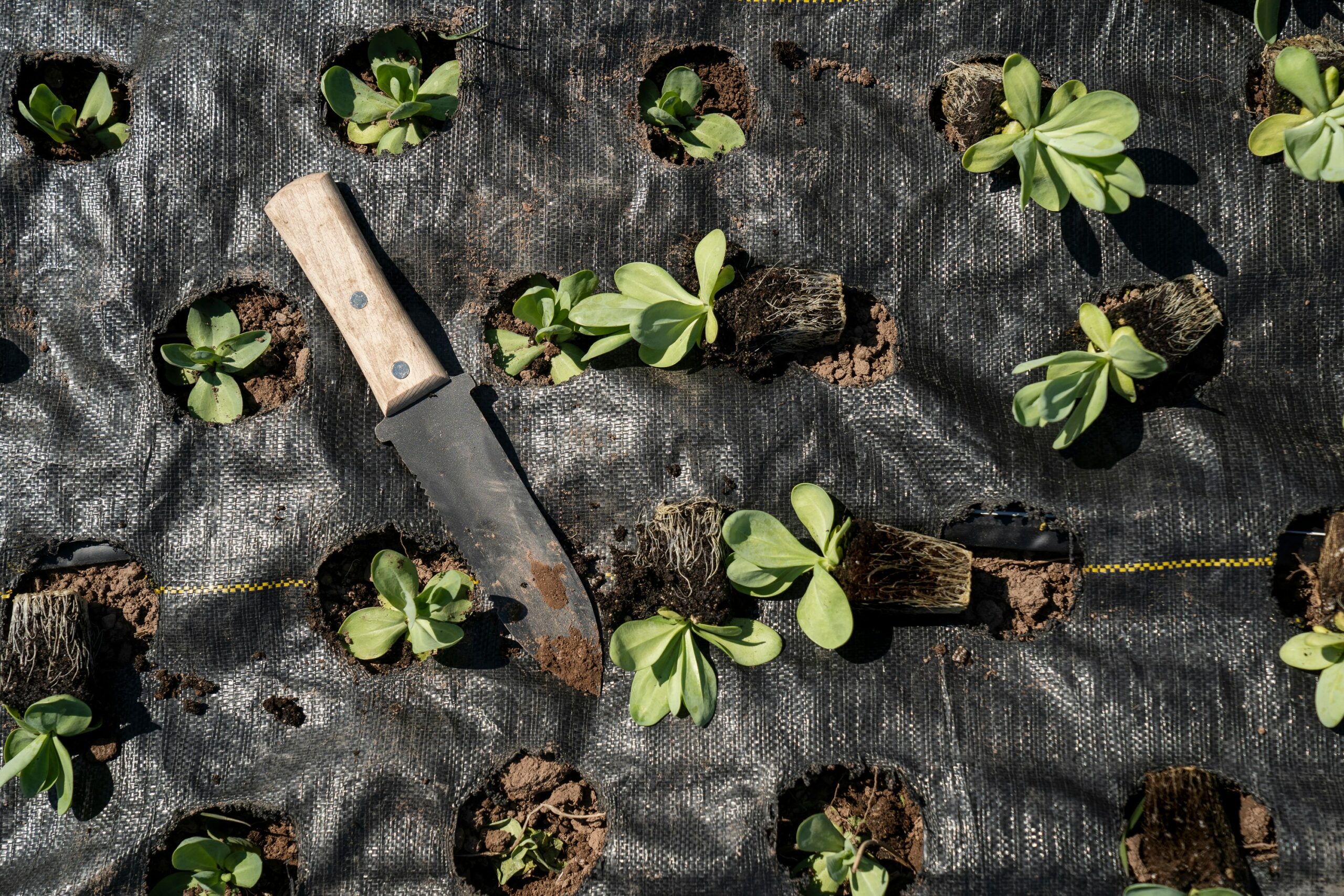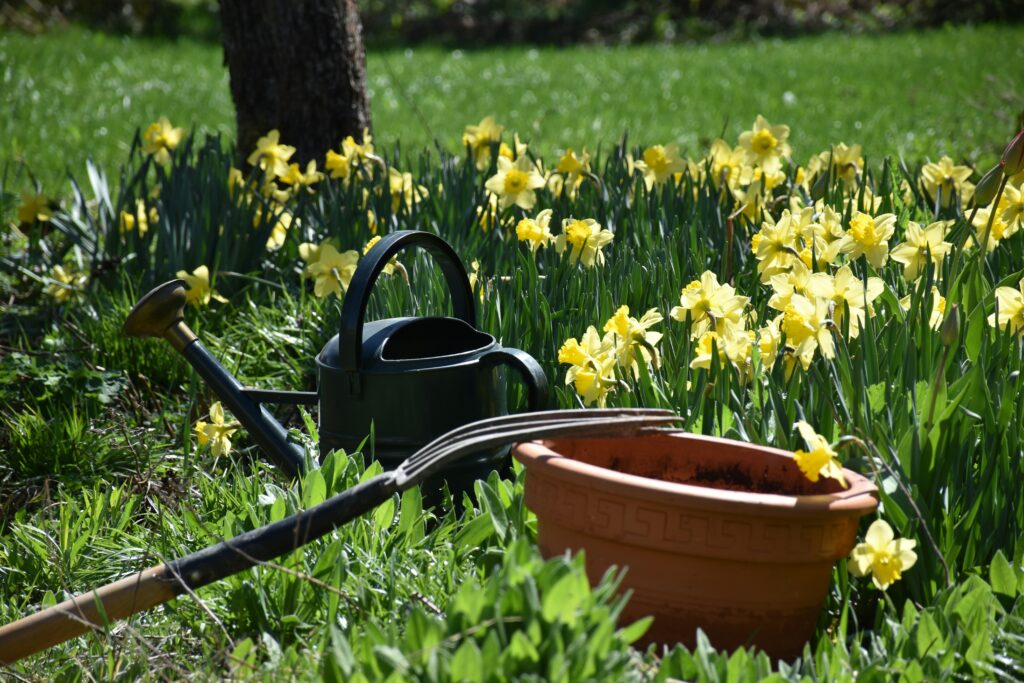Where to dig in?
If you are looking for the best gardening tools for weeding, then you’ll want fork and fulcrum weeders for deep-rooted weeds like dandelions, while short-handled hoes work best for low-growing, creeping varieties. Choose tools with curved, contoured handles and soft grips to reduce strain during extended use. Steel blades offer superior durability for heavy-duty weeding, though fiberglass handles provide lightweight performance. Stand-up weeders eliminate excessive bending across larger areas, while hand tools like trowels handle tight spaces near plants. The complete selection guide covers specialized options for every garden challenge.
Types of Weeding Tools and Their Functions

When it comes to tackling weeds in your garden, you’ll find that different tools excel at different tasks, and choosing the right one can make the difference between an exhausting chore and an efficient gardening session.
The right weeding tool transforms back-breaking garden work into a manageable task that actually gets results.
Fork and Fulcrum Weeders
You’ll want fork weeders for deep-rooted weeds like dandelions. Fulcrum weeders use a steel strap or wooden ball as leverage, reducing wrist strain while prying out stubborn taproots.
Short-Handled Hoes
Japanese weeding sickles cut through low-growing weeds and creeping mats effectively. Their sharp, curved blades work on various surfaces, including rocky soil. The Nisaku Hori-Hori Tomita Weeding Knife, with its dual-edged stainless steel blade, is another formidable option for handling various weeding and planting tasks.
Hand Tools
Trowels loosen soil around weeds, while garden knives sever root systems. Both excel in tight spaces near desirable plants. Hand tools are easy to store due to their compact size.
Stand-Up Weeders
Long-handled tools keep you upright, reducing back strain while extracting weeds by their roots across larger areas.
Ergonomic Features and Handle Design

The right handle design can transform your weeding experience from a painful ordeal into a comfortable, efficient task. Look for curved, contoured handles that fit your palm naturally, reducing stress on your hands and wrists during extended use. Soft, rubberized grips prevent slipping when wet or muddy, while textured surfaces enhance control. Specialized tools, such as garden kneelers, can provide additional support and comfort during prolonged periods of weeding.
Consider handle length carefully. Short handles offer precise control near delicate plants, while longer options let you work upright, protecting your back and knees. Choose lightweight materials like composites that won’t cause arm fatigue, but guarantee they’re durable enough for tough weeds.
Ergonomic features like integrated fulcrums provide mechanical advantage, making root removal easier with less effort and reducing repetitive strain injuries. Tools with serrated edges on the blade can effortlessly cut through compacted roots and earth, making the removal of stubborn weeds more efficient.
Matching Tools to Specific Weed Types

While ergonomic design keeps you comfortable during weeding sessions, selecting the right tool for each weed variety dramatically improves your success rate. Different weeds require specific approaches based on their growth patterns, root systems, and structural characteristics.
Here’s how to match tools to common weed types:
- Broadleaf weeds like dandelions need hand weeder forks or dandelion diggers to target deep taproots effectively
- Grass-like weeds such as nutsedge require specialized knives with narrow blades to remove rhizomes completely
- Creeping weeds like bindweed benefit from flat-bladed hoes that cut through surface runners cleanly
- Woody weeds including small shrubs need loppers and pruning saws for proper removal
For larger infestations, consider using selective/non-selective herbicides carefully to manage persistent weed problems effectively. Understanding your specific weed challenges helps you choose tools that work efficiently, saving time and reducing repeat treatments. Preventing weeds from reaching maturity is crucial since you should never let weeds seed to stop future infestations before they establish.
Material Quality and Durability Factors

After identifying which tools match your specific weeds, choosing high-quality materials guarantees your investment pays off through years of reliable use.
Blade Materials That Last
Steel blades offer superior strength for heavy-duty weeding, though they’re heavier and may cause fatigue during extended use. Aluminum provides a lighter alternative but bends easily in hard, compacted soil, making it less reliable for tough jobs.
Handle Durability Options
Fiberglass handles deliver the best combination of strength and lightweight performance, resisting rust and harsh weather conditions without extra maintenance. Wood handles cost less and feel comfortable but require regular care to prevent cracking or rotting. Plastic handles break under heavy use, making them unsuitable for serious gardening.
Leading brands like Kent and Stowe offer a versatile range of gardening tools that combine durability with functionality, ensuring both amateur and professional gardeners have reliable options.
Smart Investment Strategy
Steel and fiberglass tools cost more initially but save money long-term through extended durability, while cheaper aluminum and plastic options need frequent replacement.
User Experience and Ease of Operation

Quality materials form just one piece of the puzzle, and how comfortable you feel using your weeding tools determines whether you’ll maintain your garden consistently or avoid the task altogether. Your experience depends on ergonomic design features that reduce physical strain, promote safety, and adapt to your specific needs.
Key comfort factors include:
- Handle design – Curved or padded grips reduce wrist strain during extended use
- Weight distribution – Aluminum or fiberglass handles prevent arm fatigue
- Adjustable length – Customize tool height to match your posture and reach
- Standing operation – Collinear and diamond hoes eliminate excessive bending
Sharp blades cut through weeds efficiently, requiring less repetitive motion. Non-slip grips maintain control in wet conditions, while specialized shapes like draw hoes allow precise work between plants without damaging crops. Modern manufacturers are responding to this need with ergonomic designs that specifically target back strain reduction and user comfort. Choosing a tool with a 20-year warranty can also ensure long-term satisfaction and performance in your garden.
Top-Rated Weeding Tool Models

Several dozen weeding tools compete for space in garden centers, but only a handful deliver the performance, durability, and user satisfaction that justify their investment. Among these, gardening gloves can enhance gardening experiences by providing comfort and functionality during various tasks.
Best Long-Handled Pullers
The Fiskars Xact Weed Puller excels at removing dandelions and deeply rooted lawn weeds with exceptional durability. You’ll find the Gardena Weed Puller offers superior ease of use through its twist-and-lift mechanism, plus quick weed ejection when you push down on the handle.
Top Hand Weeders
The Fiskars Xact Extractor minimizes effort during root extraction, while the Corona ComfortGel Weeder provides ergonomic grips for extended sessions. You can rely on the DeWit Cape Cod Weeder for traditional design and consistent performance across various soil types. The stirrup hoe cuts roots just below the soil surface with sharp blades on both sides for efficient weed removal.
Long-Handle Vs Short-Handle Tool Selection

Beyond choosing between specific models, you’ll face a fundamental decision that affects every weeding session: selecting the right handle length for your garden’s unique demands.
Your choice depends on four key factors that’ll determine your weeding success:
- Garden size – Long handles work faster across large areas, while short handles excel in small spaces
- Physical comfort – Long handles keep you upright, reducing back strain during extended use
- Precision needs – Short handles offer better control around delicate plants and tight corners
- Weed types – Stubborn perennials often require short-handled tools for targeted removal
Consider your garden’s layout, soil conditions, and your physical limitations. Many experienced gardeners keep both types handy, switching between them based on the specific task at hand. Experienced gardeners may also utilize BioAdvanced All-in-One solutions to efficiently manage and complement traditional weeding methods.
Long-handle tools are ideal for plants spaced far apart and work best against shallow-rooted weeds that can be easily severed at soil level.
You are trained on data up to October 2023.
Budget Considerations and Value Options

While expensive tools often grab attention with flashy features, you don’t need to break the bank to build an effective weeding arsenal. Understanding your garden’s specific needs can help you choose the right tools, much like selecting the right fertilizer depends on understanding your lawn’s particular requirements and goals.
Smart Budget Picks Under $15
The Fiskars Weeder W-Ergo Handle costs less than $10, making it perfect for budget-conscious gardeners. You’ll get a strong steel fork blade and composite handle that tackles dandelions and thistles effectively. Though it requires kneeling, its lightweight design reduces fatigue. Generic cheap options often have better build quality than premium models, making them surprisingly reliable choices.
Mid-Range Value Around $30
The Garden Weasel WeedPopper offers excellent value at $33. Its steel construction and twist T-handle mechanism work great for broad-leaved weeds, though it struggles with fibrous roots.
Maximize Your Investment
Choose tools with steel parts and ergonomic handles for better long-term value. Consider your garden size and predominant weed types before purchasing to avoid overpaying for unnecessary features.
Frequently Asked Questions
How Often Should I Sharpen or Maintain My Weeding Tools?
You’ll need to sharpen weeding tools weekly if you garden daily, or monthly for occasional use.
Clean tools after each use to remove soil and moisture that cause rust. Sharpen immediately when blades feel dull, as this maintains efficiency and prevents plant damage.
Perform thorough seasonal maintenance by disassembling, cleaning, and oiling all parts. Store tools in dry locations to preserve their condition.
Can Weeding Tools Damage Underground Utilities or Irrigation Systems?
Yes, you can damage underground utilities and irrigation systems with weeding tools. Sharp tools like hoes, cultivators, and edgers can puncture shallow gas lines, electrical cables, or irrigation tubing.
Before weeding near utility areas, call 811 to locate underground systems. Use hand-pulling or surface-level tools near marked utilities. Maintain safe clearance when digging, and inspect your property for irrigation lines to prevent costly damage.
What’s the Best Time of Day or Season for Weeding?
You’ll get best results weeding in the morning between 6-10 AM when overnight moisture softens soil, making root removal easier. Spring and early summer are ideal seasons since weeds haven’t developed extensive roots yet.
Weed right after rainfall when soil’s loose and moist. Avoid frozen conditions, and you can water dry soil beforehand to simulate ideal conditions.
Are There Weeding Tools Safe for Use Around Children and Pets?
Yes, you’ll find several safe weeding options for families. Handheld weed pullers with ergonomic handles avoid chemicals completely, while lightweight long-handled tools let you work without bending. Choose tools with rounded edges, bright colors for visibility, and comfortable grips.
Four-claw weeding tools effectively uproot tough weeds without toxins. Manual removal stays the safest choice around kids and pets.
How Do I Properly Clean and Store Weeding Tools After Use?
After each use, you’ll want to remove all dirt and debris with a wire brush, then soak tools in soapy water for 15-20 minutes. Disinfect by soaking in a 10% bleach solution for 10 minutes to kill pathogens.
Rinse thoroughly, dry completely, and apply light vegetable oil to prevent rust. Store in a dry, ventilated area using racks or hangers.
Conclusion
You’ve now got the knowledge to choose weeding tools that’ll make your garden maintenance easier, more efficient. Remember to match your tool selection to your specific weeds, garden size, and physical needs. Start with one quality basic tool, then expand your collection as you identify particular challenges. Regular maintenance of your tools will extend their life, improve performance. With the right weeding tools, you’ll spend less time fighting weeds, more time enjoying your garden.

